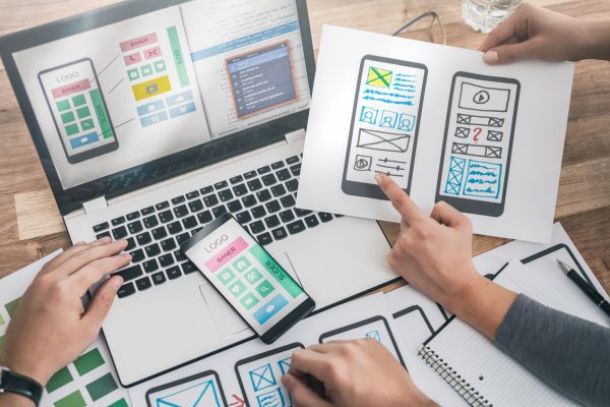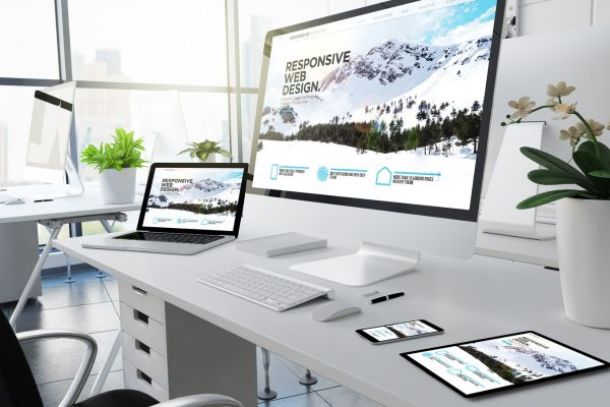Editorial Design Tips: Creating Magazine and Book Layouts
Editorial Design Tips: Creating Magazine and Book Layouts
In the world of publishing, design plays a crucial role in capturing readers’ attention and enhancing their reading experience. Whether it’s a magazine or a book, a well-designed layout can significantly impact how content is perceived. In this article, we will explore essential tips for creating captivating and effective editorial designs for magazines and books. From typography to grid systems, let’s dive into the world of editorial design.
Understand the Purpose and Audience
Before diving into the design process, it is essential to understand the purpose and target audience of the publication. Is it a fashion magazine targeting young adults, or a scholarly book intended for academics? By knowing the purpose and audience, you can tailor the design elements accordingly, such as selecting appropriate fonts, color schemes, and imagery.
Choose the Right Typography
Typography is a vital element in editorial design. Selecting the right typeface can convey the tone and personality of the publication. For magazines, consider using a combination of serif and sans-serif fonts to differentiate between headlines, subheadings, and body text. Books generally opt for a consistent serif font for easier readability. Pay attention to font sizes, line spacing, and kerning to ensure optimal legibility.
Create a Visual Hierarchy
An effective editorial design guides readers through the content by establishing a clear visual hierarchy. Use size, weight, and color to differentiate headlines, subheadings, and body text. Important content should stand out, while secondary information can have a subtler visual treatment. This hierarchy helps readers navigate the publication easily and find the information they are looking for.
Utilize Grid Systems
Grid systems provide structure and organization to your layouts. By dividing the page into a grid, you can create a consistent and balanced design. Experiment with different grid layouts to find the one that best suits your publication’s aesthetic and content. Grids also aid in aligning elements and ensuring a cohesive look across all pages.
Incorporate White Space
White space, or negative space, refers to the empty areas in a layout. It allows the content to breathe and creates a sense of clarity and elegance. Avoid overcrowding your designs with too many elements. Instead, embrace white space to give your publication a clean and sophisticated look. Remember, less can often be more when it comes to design.
Use High-Quality Images
Visuals are powerful tools for capturing readers’ attention. Incorporate high-quality images that are relevant to the content and enhance the overall design. Images should be crisp, well-composed, and properly sized to maintain their integrity across various devices. Consider using a consistent style for images throughout the publication to create a cohesive visual experience.
Consistent Color Scheme
A cohesive color scheme enhances the overall aesthetic of a publication. Choose a color palette that complements the content and aligns with the publication’s branding, if applicable. Consistency is key when using colors, ensuring that they are used in a deliberate and harmonious manner throughout the layout.
Experiment with Layout Variations
While consistency is important, don’t be afraid to experiment with layout variations to maintain readers’ interest. Introduce different design elements, such as pull quotes, sidebars, or infographics, to add visual interest and break up the content. However, make sure these elements enhance the reading experience rather than distract from it.
Consider Accessibility
Inclusive design is crucial in editorial design. Ensure that your layout is accessible to a wide range of readers, including those with visual impairments or reading disabilities. Use sufficient color contrast, provide alternative text for images, and choose fonts that are easy to read. By considering accessibility, you make your publication more inclusive and reach a broader audience.
Test and Iterate
Before finalizing your design, gather feedback from others and conduct user testing if possible. Observe how readers interact with the layout and gather insights for improvement. Iteration is a crucial part of the design process, allowing you to refine and enhance your layouts based on real-world feedback.
Pay Attention to Alignment and Consistency
Alignment is a crucial aspect of editorial design. Ensure that all elements on the page are properly aligned to create a sense of order and coherence. Use grids, guides, and alignment tools in design software to achieve precise alignment. Consistency is equally important, especially when it comes to elements like margins, spacing, and indents. Maintaining a consistent visual structure throughout the publication contributes to a polished and professional look.
Balance Text and Images
A well-balanced combination of text and images is essential for an engaging layout. Too much text without visual breaks can overwhelm readers, while too many images without accompanying text may lack context. Find the right balance by interspersing relevant images throughout the text, breaking up long passages with subheadings or pull quotes, and using captions to provide additional information. This combination creates a visually appealing and informative reading experience.
Use Captivating Headlines and Subheadings
Headlines and subheadings are critical for capturing readers’ attention and guiding them through the content. Craft compelling and descriptive headlines that convey the essence of the article or section. Subheadings should provide a clear hierarchy and act as signposts, giving readers an overview of the content and allowing them to navigate easily. Experiment with different font styles, sizes, and colors to make headlines visually appealing while maintaining readability.
Consider the Reading Flow
The flow of reading is an important consideration in editorial design. Arrange content in a logical sequence that takes readers on a journey from one page to the next. Ensure that articles or chapters flow smoothly, avoiding abrupt transitions or disjointed content. Use design elements such as arrows, lines, or page numbers to guide readers and indicate the sequence of the material. A well-structured reading flow enhances comprehension and keeps readers engaged.
Use Infographics and Visualizations
Infographics and visualizations are powerful tools for presenting complex information in a visually compelling and easily digestible manner. Consider incorporating charts, graphs, diagrams, and other visual elements to convey data, statistics, or step-by-step processes. Infographics break down information into concise and visually appealing formats, making it easier for readers to understand and retain key points. However, ensure that the visuals align with the overall design aesthetic and do not overpower the rest of the content.
Add Interactive Elements for Digital Publications
If you’re designing for digital platforms, take advantage of interactive elements to enhance the reader’s experience. Incorporate interactive features such as clickable buttons, image galleries, embedded videos, or hyperlinks to provide additional context or supplementary content. These interactive elements add depth and engagement to the publication, taking advantage of the interactive capabilities of digital mediums.
Proofread and Edit Carefully
Before finalizing your layout, make sure to proofread and edit the content meticulously. Typos, grammatical errors, or inconsistencies can undermine the credibility and professionalism of your publication. Double-check all text elements, including headlines, captions, and body text, for accuracy and coherence. Consider enlisting the help of a professional editor or proofreader to ensure a polished final product.
Stay Updated with Design Trends
Editorial design, like any other design field, is subject to evolving trends. Stay updated with current design trends while also considering the timeless principles of design. Follow design blogs, attend industry conferences, and explore design communities to stay abreast of the latest developments. However, always evaluate the relevance and suitability of trends for your specific publication and audience.
Seek Inspiration
Inspiration can come from various sources. Look for inspiration in other magazines, books, websites, or even art and nature. Expose yourself to different design styles, aesthetics, and visual languages to expand your creative horizons. Create mood boards or collect a repository of inspiring designs that you can reference during your creative process. However, always strive to infuse your unique style and vision into your designs.
Iterate and Improve
The process of editorial design is iterative. Continuously seek feedback from colleagues, clients, or readers and be open to constructive criticism. Use the feedback to refine your layouts, address any design issues, and make improvements. Iteration is the key to creating exceptional designs that resonate with your target audience.
Embrace Creativity and Experimentation
Editorial design is a space for creativity and experimentation. Don’t be afraid to push the boundaries and try new ideas. Explore different color palettes, typography combinations, and layout arrangements. Play with unconventional shapes, overlays, or unconventional placement of elements. Embrace the opportunity to think outside the box and create unique and visually striking designs that captivate readers. Remember that experimentation is the key to innovation and can lead to unexpected and exciting results.
By implementing these additional tips, you can further enhance your editorial design skills and create layouts that truly stand out.
Conclusion
Creating captivating magazine and book layouts requires a thoughtful blend of design principles, creativity, and an understanding of the target audience. By implementing these tips, you can develop visually striking and reader-friendly editorial designs. Remember to focus on typography, layout, balance, consistency, and user experience to create a publication that engages and delights readers. With practice and dedication, you can become a master of editorial design and bring your creative vision to life.


